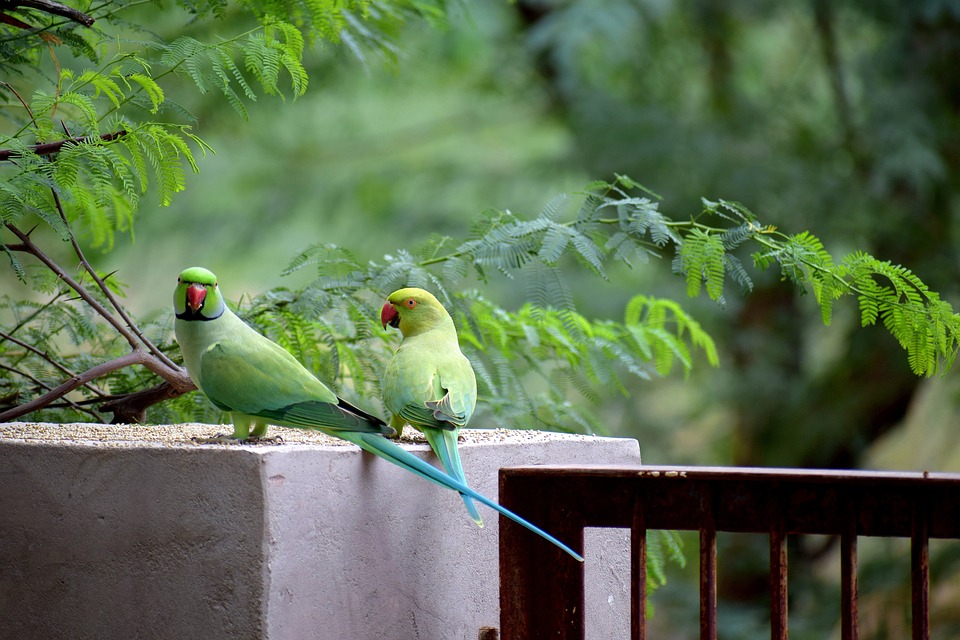Parrots are highly intelligent and social creatures that require mental stimulation and engagement in order to thrive. One effective way to provide this stimulation is through the use of toys. Toys not only keep parrots entertained but also help to prevent boredom and potential behavioral issues. However, not all parrots readily interact with toys, and it may require some encouragement and understanding of their behavior to get them engaged. In this article, we will explore effective techniques to encourage parrots to interact with different types of toys.
Understanding Parrot Behavior and Toy Preferences
Before diving into the methods of encouraging parrot-toy interaction, it is vital to understand their behavior and preferences. Parrots have different personalities and preferences, so it is crucial to consider their individual needs when selecting toys. Some parrots may prefer puzzles and foraging toys that challenge their problem-solving skills, while others may enjoy toys that involve physical activity or mimic their natural environment.
Additionally, parrots are curious by nature and are attracted to colorful toys with different textures and shapes. They often enjoy toys that can be manipulated or destroyed, as this mimics their natural foraging behavior. Understanding these preferences will help you select the most suitable toys for your parrot.
Creating a Safe and Stimulating Environment
Parrots are more likely to interact with toys when they feel safe and secure in their environment. Here are some tips to create an engaging space for your parrot:
1. Provide a variety of toys: Introduce a mix of toys that cater to different interests and preferences. Rotate the toys regularly to maintain novelty and prevent boredom.
2. Offer interactive toys: Toys that require parrots to problem-solve or manipulate objects are great for mental stimulation. Foraging toys, puzzle toys, or toys with hidden treats can keep your parrot entertained for hours.
3. Incorporate natural elements: Introduce toys that mimic the textures and sounds of the wild, such as wooden blocks, ropes, or bells. These toys provide a sense of familiarity and engage your parrot’s natural instincts.
4. Consider size and suitability: Ensure the toys are of an appropriate size for your parrot, as small toys can pose a choking hazard. Also, avoid toys with small detachable parts that your parrot might swallow.
5. Location matters: Place the toys in different areas of your parrot’s cage or play area, varying their placement regularly. This encourages exploration and prevents monotony.
Encouraging Parrot-Toy Interaction
Now that you have created an environment conducive to parrot-toy interaction, let’s explore some strategies to encourage engagement:
1. Lead by example: Actively engage with the toys in front of your parrot, demonstrating their functionality and enjoyment. Parrots are highly imitative, and seeing you interact with toys will pique their interest.
2. Use positive reinforcement: Reward your parrot with treats or praise whenever they interact with a toy. Associating positive outcomes with toy engagement will motivate them to continue exploring.
3. Start with simple toys: Begin with toys that are easy to manipulate or destroy. This provides a sense of accomplishment for your parrot and encourages further exploration.
4. Incorporate favorite treats: Attach your parrot’s favorite treats to toys or hide them inside for your parrot to discover. The tantalizing scent and the reward of finding treats will motivate them to interact with the toy.
5. Gradually introduce new toys: Introduce one toy at a time to prevent overwhelming your parrot. Allow them to become familiar with each toy before introducing the next one.
FAQs about Parrot Toy Interaction
Q: My parrot seems uninterested in toys. What should I do?
A: Start by observing your parrot’s behavior and preferences. Experiment with different types of toys, incorporating their favorite treats or textures. Be patient, as it may take time for your parrot to warm up to toys.
Q: How often should I rotate my parrot’s toys?
A: It is recommended to rotate toys every few days or weekly to maintain your parrot’s interest. However, observe your parrot’s behavior to determine the ideal rotation schedule.
Q: Are there any toys that are not suitable for parrots?
A: Yes, avoid toys made of toxic materials such as lead or zinc. Additionally, toys with small detachable parts or sharp edges should be avoided to prevent injuries.
Q: Can I make my own parrot toys?
A: Absolutely! Homemade toys can be great for parrots. Just ensure they are made from bird-safe materials and do not pose any choking hazards.
Q: My parrot only plays with one specific toy. Is that normal?
A: Parrots, like humans, can have preferences. If your parrot shows a strong attachment to a particular toy, it is perfectly normal. However, continue to introduce new toys to provide variety and mental stimulation.
In conclusion, encouraging parrots to interact with different types of toys requires understanding their behavior and preferences. By creating a safe and stimulating environment, selecting suitable toys, and using positive reinforcement, you can foster engagement and mental stimulation for your parrot. Remember to be patient and observe your parrot’s individual needs and preferences. Happy toy exploration!









